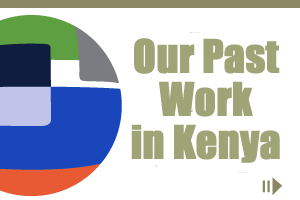Internews’ program in Kenya that focused on training journalists about the science behind Voluntary Medical Male Circumcision has been named as an example of best practice in creating demand for the high impact HIV prevention procedure. BBC Media Action’s online portal (backed by the Bill & Melinda Gates Foundation) cites Internews’ journalism training, focused on accurate and fair coverage for VMMC, as the procedure is known, as one of the best examples of demand creation underway in Africa.
Kenya adopted the World Health Organization (WHO) and the United Nations Joint Programme on HIV/AIDS (UNAIDS) recommendations on HIV prevention in the early 2000s, and incorporated VMMC in its HIV prevention portfolio. As of December 2011, the country had done more than 350,000 procedures, making Kenya one of the top performers in scaling up VMMC in East and Southern Africa.
Internews’ training approach illustrates the benefits of training journalists to report accurately and impartially on culturally sensitive topics, such as VMMC. The training resulted in some 100 news stories focused on this high impact HIV prevention procedure that were published or broadcast. What was notable was that the media did not carry any negative news stories about the topic during the period that Kenya was rolling out the medical procedure in Nyanza Province. Nyanza is home to the Luo, the country’s largest non-circumcising ethnic group.
“We believe that the impact of positive media coverage, or at the very least, the absence of negative coverage, complements and reinforces traditional public campaigns aimed at creating demand and behaviour change,” said Internews in Kenya Country Director, Ida Jooste.
Internews also worked with civil society and health agencies working in the field of VMMC as another means to connect with and educate the media on complex public health topics. A press conference called by the National Voluntary Medical Male Circumcision Task Force in 2012, illustrated the power of this approach. Following media literacy training for 10 members of the task force, the group focused on women’s involvement in male circumcision. To their delight, their press conference resulted in some 25 news and feature stories, both on air and in print.
“After the training my view of the media changed completely. I met journalists who are passionate about their work and they will help us communicate our position if we communicate clearly with them,” said Dr. Anthanasius Ochieng, National AIDS and STI Control Program VMMC Program Director and chair of the task force. “I saw how the media can help us advance our work.” Dr. Ochieng, who was interviewed by several journalists after the press conference, noted that “even before the function was over, a colleague from Kericho called to tell me our story was on air on radio”.
The premise for Internews’ approach is that by training journalists to cover VMMC responsibly puts them in a better position to educate the public about the benefits of the medical intervention. Journalists are then much less likely to write negative or sensationalized news stories – all of which can suppress demand for VMMC. As an impartial media training organization that does not prescribe to journalists what to cover, Internews’ main concern is make sure that journalists understand the science that drives VMMC and that they cover it accurately, within the context of balancing journalistic coverage along with behaviour change communications and overt demand creation activities. This approach, Internews believes, ensures sustainable benefits: journalists and their editors continue to write and publish stories on the subject of VMMC – based on news values.
Jooste related an occasion when a critical article was published in Uganda about VMMC quoting a (very poor-quality) study which attacked the credibility of the initial three-country VMMC study. “Rather than wait for the Kenyan media to pick up and run the story, Internews proactively convened a round-table with journalists and VMMC experts from the National AIDS and STI Control Programme, and other organisations to analyze the story and examine its scientific arguments. As a result, not a single media outlet in Kenya chose to pick up or run the sensational story.”
Read more about Internews’ VMMC journalism training within the context of demand creation for the medical procedure: http://www.demandcreationforvmmc.org/projects/country_filter/Kenya




